(Links checked and post updated May 2020)
The Whanganui River was first settled by Maori, this map shows the numerous marae and former pa sites (fortified villages). One of the most striking features of the *79km Whanganui River Road is the number of meeting houses you see along the river. There is protocol surrounding a marae visit so it’s respectful not to enter without an invitation.
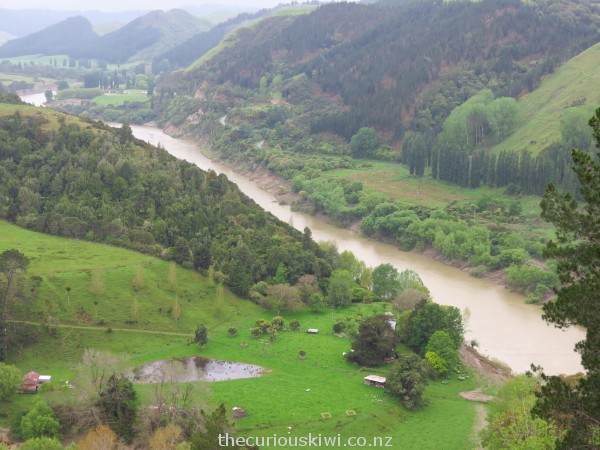
Looking down over Whanganui River Road from Aramoana Summit (17km from Whanganui)
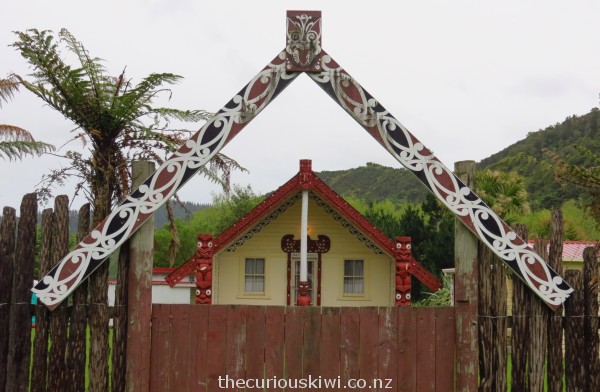
Maranganui meeting house, one of the first meeting houses you will see at the Whanganui end of the road
We travelled from Whanganui to Pipiriki in the rain which added a moody feel to the landscape, and rain mixed with mud made a good reason to clean the car when we got home.The road is narrow and windy in places so take it slow and be prepared to give way.
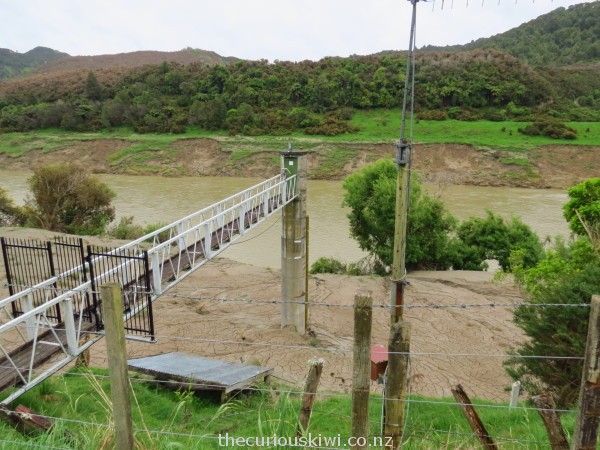
River level marker (24kms from Whanganui) – top white mark shows 1904 water level, although the river rose higher in 1940.
Around three kilometres after the river level marker look out for the Oyster Cliffs. This area was once under the sea and layers of fossilised oysters can be seen in the cliffs along the road.
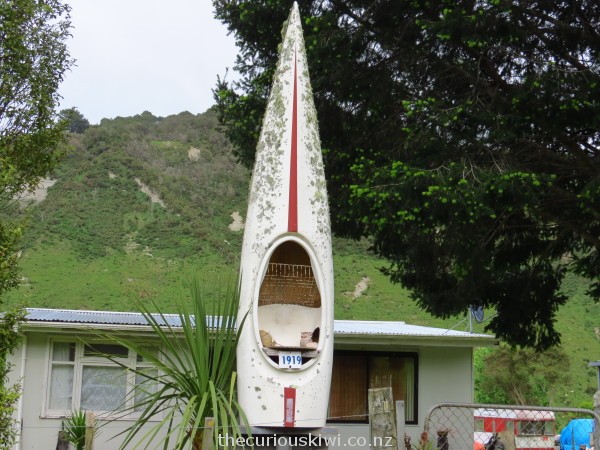
One of the many unusual letter boxes on the Whanganui River Road
For a glimpse back in time, this photo shows a group of Maori outside Te Rangihekeiho meeting house (below), the photo was taken between 1874 and 1900. I’m not sure if all the meeting houses we saw along the river are original, but all of the marae are well looked after. A Whanganui River settlement ensures a healthy future for both the river and all associated with it.
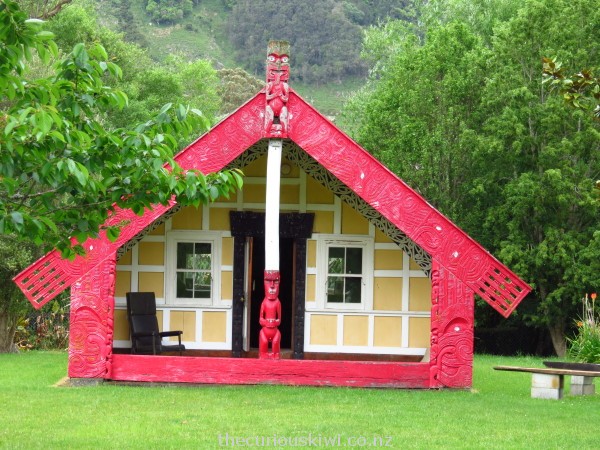
Te Rangihekeiho meeting house at Atene
The cute little Downes Hut is named after Thomas William Downes. Mr Downes worked for the Whanganui River Trust and used the hut as his headquarters in the 1930’s. The hut is now owned by the Department of Conservation and is used by canoeists and trampers.
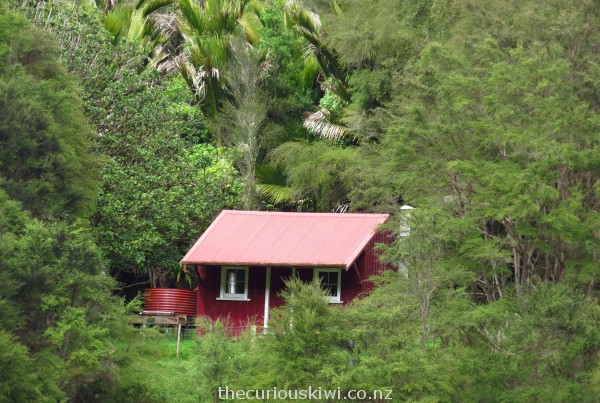
Cute little DOC Downes Hut, located across the river
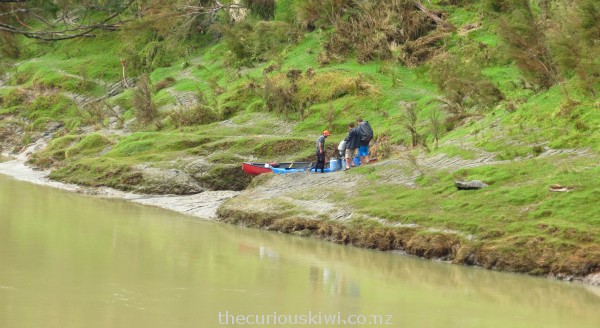
Canoes are a popular way to get down the river today
The Flying Fox is an unusual accommodation option 42kms or so down the river road from Whanganui. Camping, glamping and cottage stays are options.
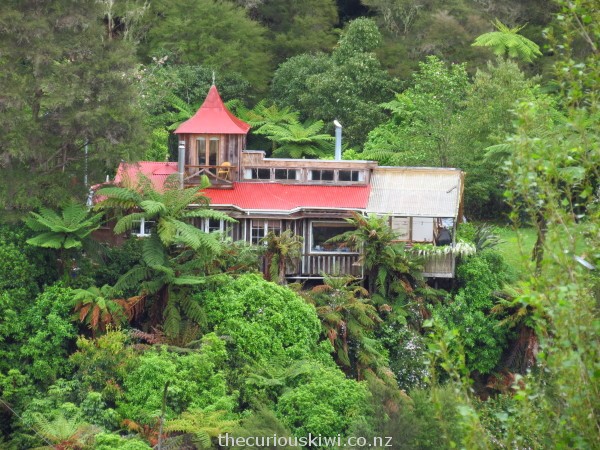
The Flying Fox Retreat, located across the river
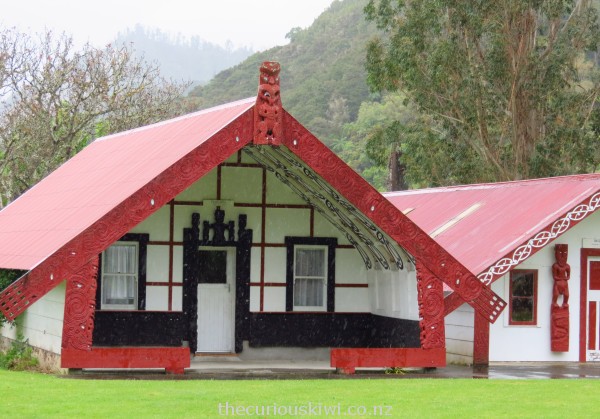
Koriniti Marae
Kohu Cottage is another accommodation option.
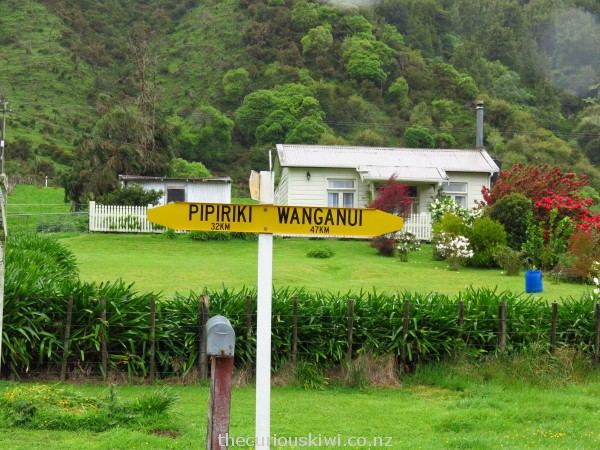
Kohu Cottage accommodation in the background
A former school is now Matahiwi Cafe & Gallery. Outside the cafe is the wooden boat used in the movie River Queen which was filmed on the Whanganui River.
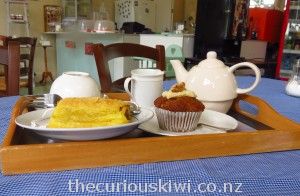
Snack stop at Matahiwi
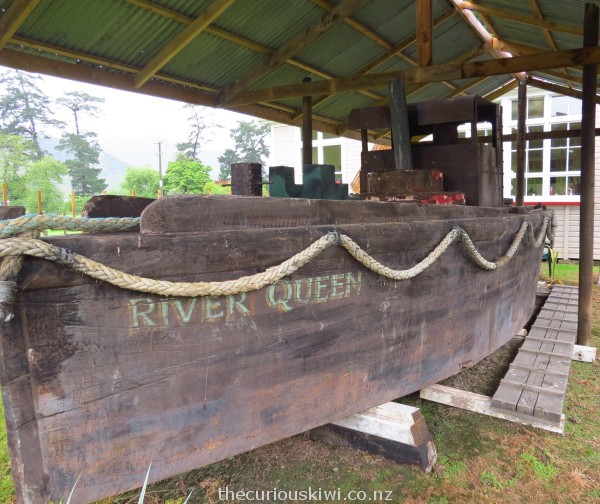
River Queen
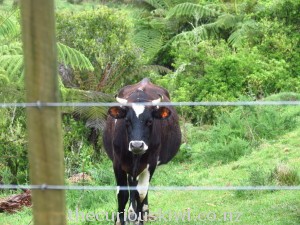
River King?
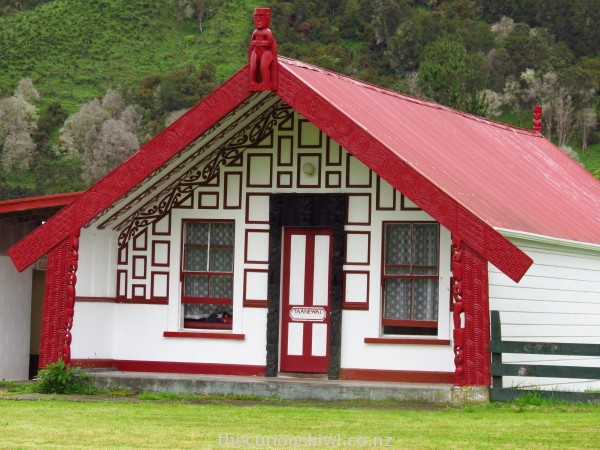
Taanewai meeting house on Matahiwi Marae
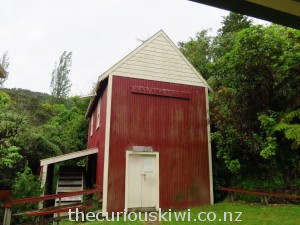
Kawana Flour Mill
The Kawana Flour Mill operated from 1854 until 1913. The mill building is a replica but the water wheel and millstones are original, as is the relocated miller’s cottage. (The flour mill is 54kms from Whanganui).
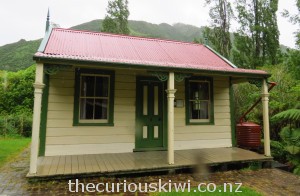
Miller’s cottage behind the mill
It’s worth going inside the mill to see photos of the river boats that graced the Whanganui River, once promoted as ‘The Rhine of the South’. The first regular steam boat service started in 1892, prior to the river road opening in 1934 river boats were the way to travel and were popular with tourists.
Today you can board the paddlesteamer Waimarie in Whanganui and travel up to Upokongaro. The boat was salvaged from the Whanganui River in 1993 after sinking in its berth in 1952. Restoration work was completed and the PS Waimarie started transporting passengers again on 1 January 2000.
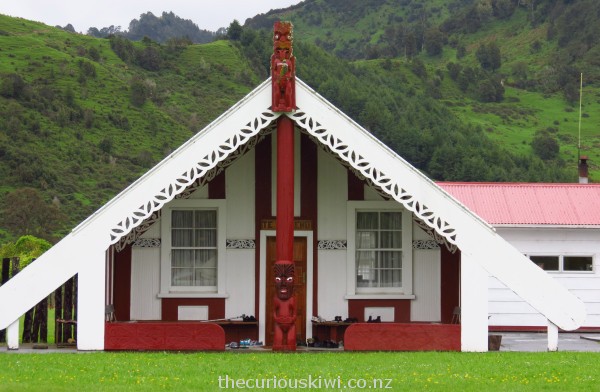
Ranana Marae
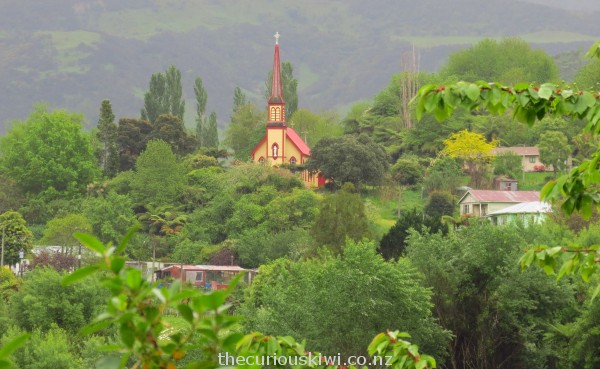
Hiruharama (Jerusalem) from a distance
We stopped briefly in Jerusalem (64kms from Whanganui) and walked around the pretty and peaceful garden at the Sisters of Compassion Convent. Stay at the old convent in dormitory style rooms from $25pp. There’s also one double room with an ensuite. The accommodation is self catering and you need your own bedding.
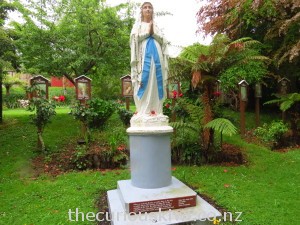
Garden at Sisters of Compassion Convent
Jerusalem is also the resting place of poet James K Baxter who established an alternative community nearby in 1969. I’ve always liked his words on the Wellington Writers Walk, the rest of the poem can be read here.
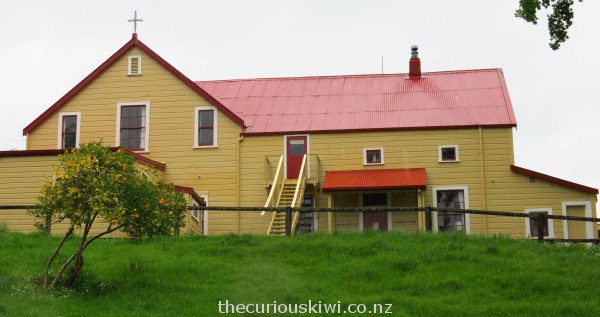
Accommodation at Sisters of Compassion old convent
The Whanganui River Road ends at Pipiriki, the gateway to Bridge to Nowhere – tours and accommodation. It’s a unique journey the river road, with its twists and turns alongside farmland, Maori meeting places, and reminders of early European settlement. It’s likely you’ll encounter a typical rural traffic jam – farmers and their dogs moving sheep or cattle. Travelling well under the speed limit is the safest way to complete the 79km journey. Allow 1.5 – 2 hours including stops.

Rural traffic jam
We drove from Pipiriki to Raetihi and on to Taupo. You can drive the Whanganui River Road as a round trip, from Raetihi follow the twisty Paraparas (State Highway 4) back to Whanganui.
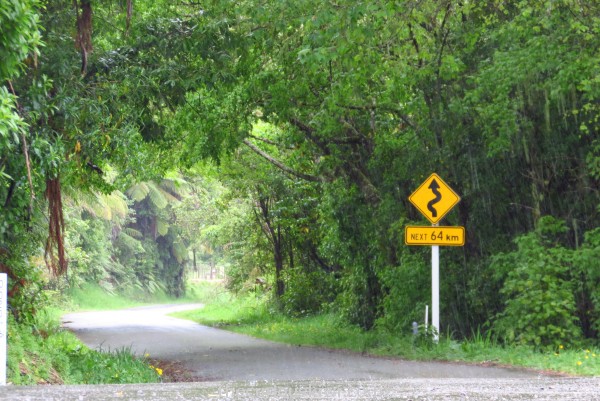
Road to Raetihi
*Some tips for the trip:
– Visit the Whanganui i-SITE at 31 Taupo Quay and pick up the Whanganui River Road brochure. (There are also i-SITES in Taumarunui and Ohakune).
– It’s a rural road with no petrol stations or shops, fill up with petrol and stock up on food if you intend to stay the night.
– The road is now completely sealed but it’s narrow and windy in places so take it slow and be prepared to give way to traffic (even if you think you’ve got right of way). Also watch for farmers moving stock.
– If you don’t have your own transport you can take a Whanganui River Road Mail Tour.
More about Whanganui River.
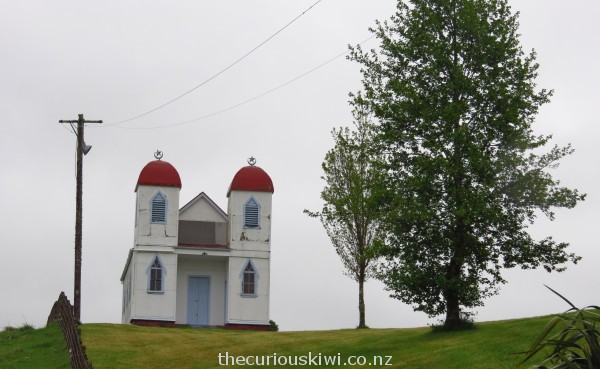
Ratana Church at Raetihi

I finished the Whanganui river road walk and want to thank all the beautiful locals who wished me all the best as we came across each other during my walk and the beautiful host at the Matahiwi café who made me so welcome and we talked for at least 1 hour on all things New Zealand also to the great people who gave me a tour around Jerusalem,just a lovely time and makes me so proud to be a Kiwi
Hi Bruce
What an awesome comment to find in my email today – big-ups to the folks on the river road, a trip to remember.
I know one thing I’ve learned from travelling over the years is that I might set out see a destination but so often it’s the people I meet along the way that make the trip most memorable.
I want to walk from Raetihi to Whanganui as part of my New Zealand walk,is there anywhere to bunk down overnight between Raetihi and Pipiriki
Hi Bruce
Not that I know of, but contact visitwhanganui.nz (the official I-SITE) and they may be able to help. Enjoy the walk.
Hi
A group of us doing a motorcycle trip up the River road on Dec 27th . Are there any cafe’s on the road we can plan stops at?
Kim
Hi
As mentioned above there is Matahiwi Cafe & Gallery, it’s about half way up the road. The Gallery now has a Facebook page with contact details (it’s linked above), so they may put their holiday hours up there, I’d say they’d be open, but you never know. If they are closed, Pipiriki would be the next place to stop. Happy travels.
PS There has been road works on the road but the Council info says it should be all done by Christmas – http://www.whanganui.govt.nz/our-services/civil-defence-and-emergency/road-conditions/Pages/default.aspx
Greetings, Kia Ora,
Is there anyone who has knowledge of the where abouts on the Whanganui river is Tauwhitinua Pa? I would be grateful if someone could advise me.
Regards MikeOB
Kia Ora Mike
No, not personally, however if you click the map link on the first line of the post you will see Tawhitinui (also known as Tauwhitinui), I note you spelt it Tauwhitinua, maybe the a should be an i? If you Google Tawhitinui quite a few mentions come up, this one about Hori Pukehika who carved the panels for the Tawhitinui meeting house opposite Moutoa Island, the panels are now in the Whanganui Regional Museum – http://www.teara.govt.nz/en/biographies/3p35/pukehika-hori
My friend and I intend on visiting the River Road in April. This article has helped us both heaps! We are nervous but eager to visit – I actually have land to my name that we want to go and explore. We are also studying James K Baxter in school, so it will be great to visit Jerusalem.
Thanks!
Hi
Sorry for the delay in replying but I’m overseas and have had trouble accessing email and the blog.
Glad to be of help, it’s special to have land on the Whanganui River and it will be exciting for you to stand on it for the first time. It’s great timing to be studying James K Baxter, it’s easy to see why he chose Jerusalem as a place to settle, it’s so serene there. Happy trails to you both on the River Road.
Thanks for the heads up. The Matahiwi cafe and gallery was spectacular. The only food place up this magical road, and in a perfect location, definitly needed a pit stop and the host Marlene was so inviting and full of knowledge of the area. A wonderful experience
Nice one, it’s always good to hear of travellers wonderful experiences.
I stumbled across your blog while looking see if I could drive from Whanganui to Raetihi. Thank you so much for this post, I will now know where to linger.
Hi Pauline
You’re most welcome, and thank you, it’s always good to know that a post has been useful. We didn’t stop at Pipiriki but I believe there’s a small food stop there if the Matahiwi Cafe & Gallery is closed and you want to take a break before continuing on the rood to Raetihi. Happy trails.
Lucky I came across your blog today – I am going on a retreat to Jerusalem in November (again), just love the atmosphere there. Great to know the road is now sealed.
Hi, We just stopped in Jerusalem briefly but it was so lovely and peaceful, I can imagine it would be a perfect place for a retreat. If it’s a public retreat and there are still places available, feel free to post a link. I’m curious myself as to what sort of retreat it is. Cyclists especially will appreciate the new seal I’m sure, it would have been hard, slow going after a lot of rain.